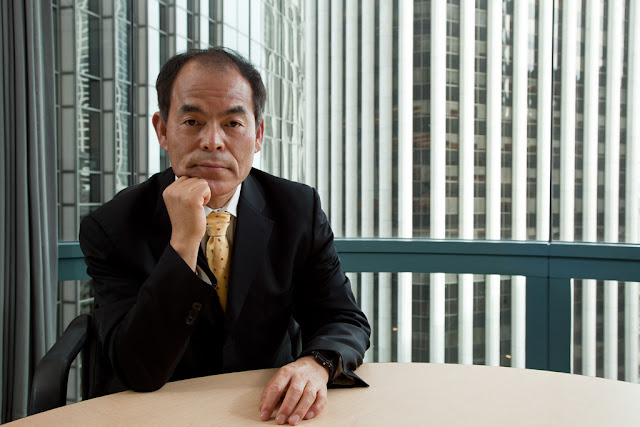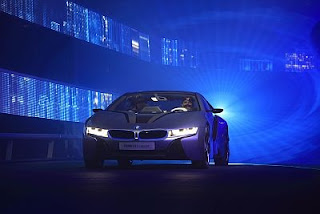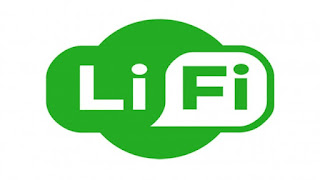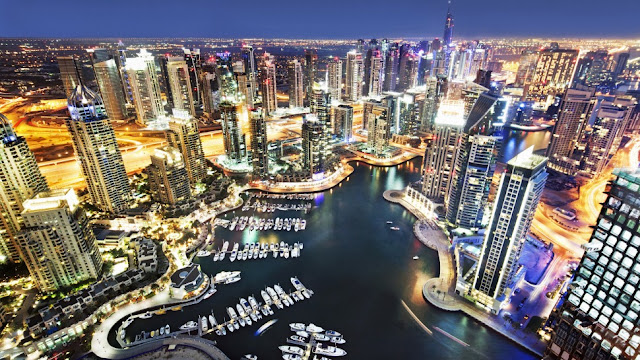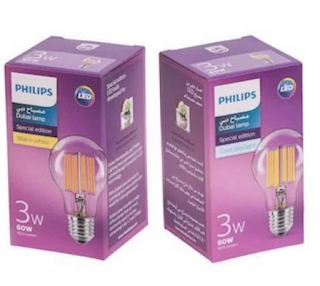Archive for February 2017
28
Li-Fi crucial to the future of lighting, says LED inventor
Comments off · Posted by admin in LED
Speaking at Academia Sinica, in Taipei, Dr. Nakamura stated that LED has now reached a ‘stage of maturity’ and manufacturers are seeking out new markets where they can thrive into the future.
Nakamura named Li-Fi and laser lighting as two crucial areas the LED industry needs to concentrate on in order to further their businesses successfully.
The Nobel Laureate also stated in his lecture that there has been areas in which the advancement of LED has surpassed even his expectations.
For example, researchers in Taipei have recently begun using LEDs to separate malignant cancer cells from normal cells.
Most recently, Nakamura has been dedicating his time to developing laser lighting, which he hopes, will one day replace LED.
Laser lighting has already been used successfully in car development. Automotive headlights that feature laser lighting are able to project light as far as 600 metres, which is much longer than the 300 metres managed by LED.
Nakamura predicted that should Li-Fi and laser lighting combine, then the Li-Fi technology would be able to transfer data at speeds up to one hundred times faster than Wi-Fi can currently manage.
However, laser lighting does not currently have the same efficiency benefits as LED and is, in comparison with LED, quite expensive, costing up to ten times more than its sister technology.
Nakamura is currently teaching at the University of California in Santa Barbara, with his two fellow researchers, Isamu Akasaki and Hiroshi Amano, who together received the Nobel Prize in Physics in 2014 for ‘developing the manufacturing technology of the blue LED and fostering the emergence of bright, power-saving white LED.’
You can watch Lux’s interview with Shuji Nakamura here:
laser lighting · led lighting · li-fi · Novel Energy Lighting · Shuji Nakamura · visible light communication
As Philips announces they are investing in Li-Fi, this week we explore a new technology that has the ability to change the world. What is Li-Fi and how will revolutionise the way we receive the internet into our homes? Lux Today 21 February 2017
harold hass · li-fi · lucion · Novel Energy Lighting · philips led · smart homes · smart offices · visible light communication
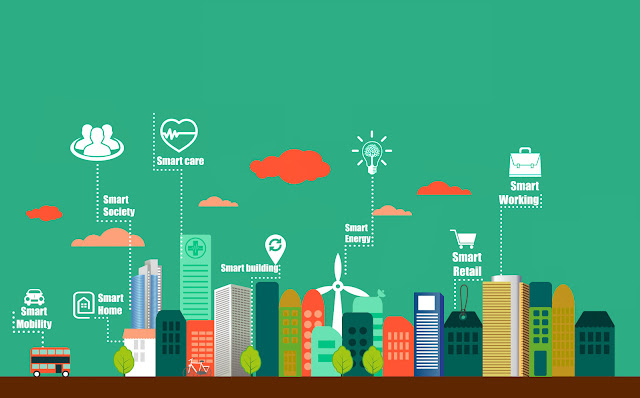
The smart city revolution shows no signs of slowing down, and the opportunities for the lighting industry are ripe for the taking. In the run up to Lux’s Lighting Fixture Design Conference, which will run from the 21 to the 22nd of February in Central London, they reveal their top five smart cites, where lighting is allowing city authorities to reimagine how our population centres are managed.
5) Los Angeles
Los Angeles is currently seeing through a plan to replace every old sodium-vapour streetlight with smart LED fixtures. The city is now 80 percent of the way through the project, which has seen the conversion of nearly 200,000 street lights. The project has saved the city over nine million dollars and has acted to reduce crime.
The existing streetlight poles are being replaced with ‘smartpoles’, which are fitted with 4G LTE wireless technology and act to improve phone reception in the tightly packed city. The smart street lights are also capable of alerting city authorities when a fixture breaks down and is need of repair and some are also able to monitor and compile analytics on traffic levels and the availability of parking places.
As we reported last year some Los Angeles street lights are able to use sensors to listen out for car crashes, reporting them to the emergency services when they occur.
Singapore is aiming to become the world’s first ‘smart nation’. Sensors and cameras are being installed to track absolutely everything from traffic to the capacity of wastepaper bins.
In Singapore lighting plays a role in the city’s incredibly smart transport network, which utilises road sensors, smart traffic lights and smart parking.
Late last year Philips Lighting announced a partnership with the Sentosa Development Corporation to develop a connected streetlight management system on Singapore’s island resort of Sentosa.
It was also recently announced that visible light communication (VLC) is being installed in the massive CapitaLand Mall to create an indoor positioning system that allows shoppers to find their favourite stores amid the mall’s labyrinth of aisles and corridors.
The authorities in Singapore have also joined forces with Scottish Li-Fi firm pureLifi, in an attempt to bring the revolutionary technology to the South-Asian city-state.
Copenhagen is already one of the world’s most sustainable and smart cities and it aims to become carbon neutral by the year 2025. Nearly half of the city’s street lights were replaced recently with LED. A number of these new fixtures form the backbone of a growing smart lighting network.
The LED streetlights brighten when vehicles approach and then dim after they pass, ensuring that roads are not continuously illuminated when it is not necessary. This is a safer option than turning off streetlights altogether in order to save money, which has been the case in the UK.
The sensor-laden light fixtures are also able to capture data and analytics and are able to help coordinate the city’s services. For example, fixtures can alert city authorities that waste bins need to be emptied.
San Francisco was arguably one of the first smart cities in the world and given its location, near Silicon Valley, this should hardly be surprising.
The city has more LEED-certified buildings than any other in the United States and a connected city initiative enables residents to locate parking places.
It was recently announced that 18,500 of San Francisco’s light-pressure sodium street light fixtures would be replaced with smart LEDs.
The new LEDs will be run via wireless smart controllers that will allow the city to remotely monitor individual light performance and adjust the intensity of the lights as required. For example, if there was a road traffic incident, the lights could be turned up.
The lights will also warn city authorities when fixtures fail or burn out, making lives better for residents, whilst saving the city money.
San Francisco’s new street lights will be powered with 100 percent clean energy, which, along with the wireless controls, will make them the greenest street lights in California.
Barcelona is renowned the world over for its smart city prowess. Boxes fitted to lampposts host finely tuned computer systems, which are able to measure traffic levels, road pollution, crowds and even the number of photographs on a particular street posted on Instagram.
Sensors fitted to streetlights and in the ground are also used to monitor the weather in Barcelona.
A few years ago the city suffered a very severe drought and came very close to running out of water altogether. As a result, smart sensors measure rainfall and analyse irrigation levels in the ground. This information is then used to modify the city’s sprinkler system to save water.
Barcelona has made the sensor it developed, Sentilo, available on the internet, meaning that city planers from around the world can study Barcelona’s smart city ventures and use the results as inspiration for their own projects.
led lighting · led streetlights · Novel Energy Lighting · smart cities · smart led streetlight · visible light communication · wireless street lights
The LED revolution has concluded, prices are falling and the industry’s attention is turning to the digital world, to the internet of things and smart cities.
In a Lux Today special edition, we examine smart cities and ask how is lighting improving our urban environments? Why are more and more cities adopting smart technology? And why does the lighting industry need to move quickly to take advantage of this new innovation?
data collection · li-fi · Novel Energy Lighting · philips citytouch · smart cities · smart street lights · visible light communication
| In France’s Carrefour supermarket, visible light communication is used to transmit information to visitor’s smartphones. |
The development is the latest leap forward in the up-hill gallop that is the progression of Li-Fi, and is a move that will no-doubt raise the profile of the new technology, by rolling it out onto a bigger stage.
The first live demonstration of Li-Fi in front of an audience was given just a few weeks ago at LuxLive in London.
Recently though, the technology’s forward momentum seems to have slowed down a little, with limited pilot implementations and demos from vendors such as Scotland’s pureLi-Fi and others, being the only evidence of implementation of the technology in the field.
The news from Philips is likely to reverse this trend and the company looks set to invest in the technology in a push toward commercialising it.
The lighting giant is planning to leap into the new and, potentially, lucrative Li-Fi market, by purchasing Luciom, a small French company, which specialises in visible light communication (VLC).
‘Philips Lighting acquired Luciom at the end of 2016,’ a Philips spokesperson confirmed to Lux’s sister publication, LEDs Magazine, noting that all eight of Luciom’s employees now work for Philips.
Luciom is developing several technologies related to VLC, including Li-Fi. Philips appears to be particularly interested in Luciom’s potential to improve Li-Fi in several ways, including speed, coding, decoding and reliability.
Once Li-Fi spreads as a technology, it is hoped that it can become another means of wireless internet transmission, assisting and complementing Wi-Fi, by opening much more frequency to internet use.
Wi-Fi with its radio frequencies is more limited than the considerably wider spectrum of LED lightwaves on which Li-Fi data rides.
Luciom is best known for a ‘tagging’ scheme, which individual LED lights use to uniquely identify themselves in one-way indoor-positioning systems. Compared to two-way Li-Fi, indoor-positioning is a more basic form of VLC that sends small amounts of information from a light to a phone or other gadget.
A number of retailers are experimenting with one-way VLC to try to engage shoppers in stores with information and direct them to promotions. Philips has had a trial with a Carrefour store in France and with the Dubai-based retail chain aswaaq. In the US, Target is trialing the technology, although it has never revealed its supplier, as Lux Review reported last year.
Philips is believed to have acquired Luciom for less than €10 million. LEDs Magazine understands that at one point Philips might have raised patent infringement queries related to Luciom, which could have factored into the price of the purchase.
‘The terms of the acquisition were not disclosed,’ the Philips spokesperson said via email, in response to questions about any patent implications.
bidirection li-fi · lifi · lifi led · light control · luciom · Novel Energy Lighting · philips li-fi · smart buildings · visible light communication · wifi lighting
9
Will Tunable Street Light Breakthrough Silence LED Critics?
Comments off · Posted by admin in LED
Will tunable street light breakthrough silence LED critics? PLUS: Smart street lights tell cities when to salt frozen roads. AND: LED protest signs take centre stage at demonstrations. Lux Today 7 February 2017.
energy efficient lighting · led lighting · lux today · Novel Energy Lighting · smart street lights · tunable street lights
6
Dubai rules all new properties must fit Philips LED lamps
Comments off · Posted by admin in LED, LED panels, LED Spots, LED Tubes, Philips LED
Fitting Philips ‘Dubai Lamp’, will be made the basic requirement for getting a Building Completion Certificate in Dubai.
Philips struck up a good deal!.. All new buildings in Dubai will soon be compelled by law to install specific LED lamps, the municipality has ruled, after striking a deal with Philips Lighting to supply millions of light sources to the emirate.
Authorities in Dubai signed a five-year contract with Philips to create the ‘Dubai Lamp’, which, it it is claimed, will be the first commercially available 200 lumen per Watt LED lamp.
The new fixtures will replace 80 percent of traditional lights currently in the emirate’s residential buildings, and, as of this year, all new buildings constructed in the city will have have to feature the Philips LED.
Fitting LED in new buildings will be made the basic requirement for getting a Building Completion Certificate, by the end of this year.
The initiative will initially focus on new buildings and big complexes such as schools, hospitals, mosques and shopping centres. A study will also be undertaken to develop a strategy of implementation for older buildings, in an attempt to ensure that the scheme ensures a wider legacy and that energy savings and a positive environmental impact continue to grow overtime.
Philips has been commissioned by the Dubai authorities to manufacture and supply two million of the ‘Dubai Lamps’, which will not contain mercury or generate heat. The Dubai Municipality plans to install 10 million Dubai Lamps before the end of 2021.
‘It will be made the basic requirement for getting a building completion certificate. This will be beneficial for both sides. The owner of the building will be able to save a lot of money on energy charges and we will able to protect the environment,’ Hussain Nasser Lootah, director general of Dubai Municipality, told The National.
‘In the beginning, we will concentrate on new buildings and we will complete a study of old buildings to see what can be done.’
Lootah said the latest agreement which is in line with government directives, supported the Dubai Integrated Energy Strategy, which targets a 30 percent reduction in energy consumption by 2030, and the Dubai Carbon Abatement Strategy, which is aimed at reducing carbon emissions by 16 per cent by 2021.
The lamps will be available in four models, both in cool daylight and warm white colours. That includes 1W candle lamps to replace the 25W incandescent lamp, 2W bulbs to replace 40W incandescent lamps, 3W bulbs to replace 60W incandescent lamps, and the 3W MR16 Spot to replace 50W halogen spots.
Novel Energy Lighting supplies the full range of Philips LED lamps, tubes, and luminaires. Please visit us today, or email: sales@novelenergylighting.com or call (0208-540-8287) to discuss you project needs.
dubai lighting · LED lamps · Novel Energy Lighting · philips led · Philips LED bulbs · philips led luminaires · Philips led panels · philips led tubes · philips lighting
Pioneering smart-lighting revolutionises European city. PLUS: President Obama gives Detroit an LED parting gift. AND: Australia launches free LED luminaire scheme. Lux 31 January 2017
detroit lighting · energy efficient lighting · led street lighting · Novel Energy Lighting · smart lighting · smart phone lighting

